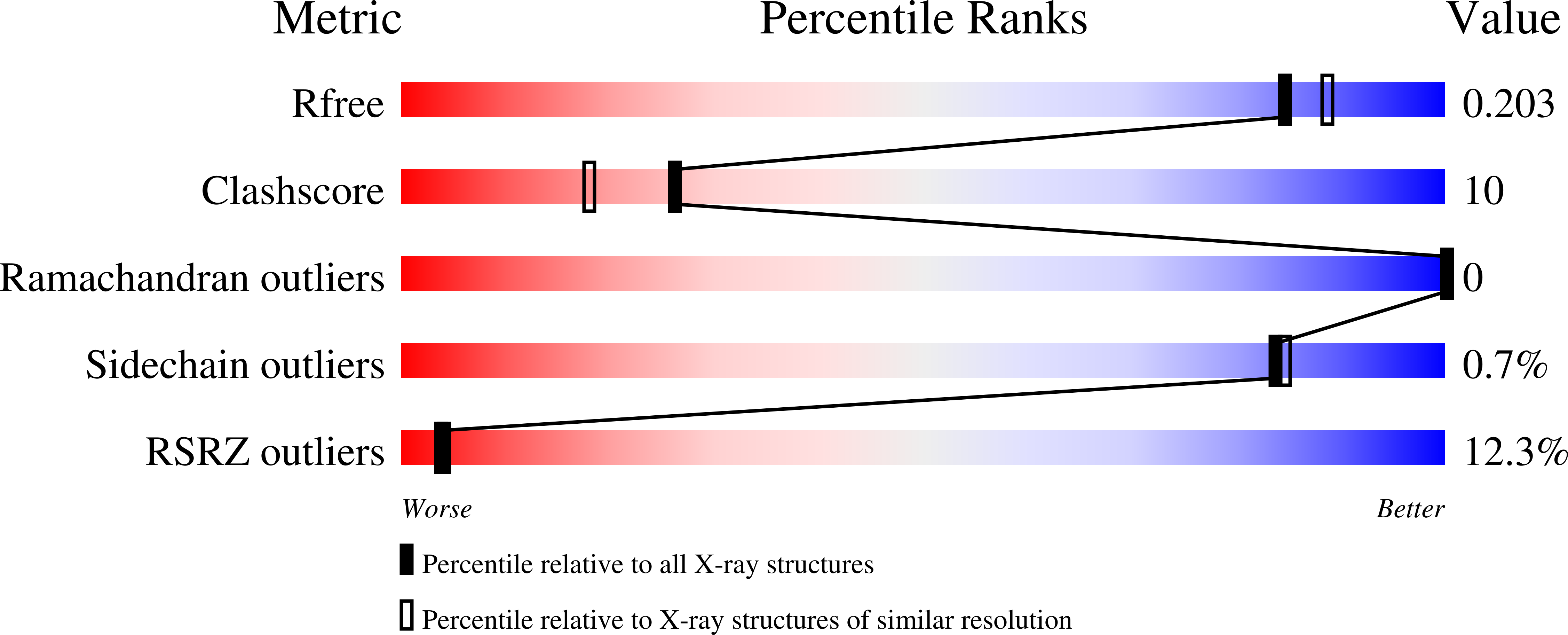Mechanism of high-affinity abscisic acid binding to PYL9/RCAR1.
Nakagawa, M., Kagiyama, M., Shibata, N., Hirano, Y., Hakoshima, T.(2014) Genes Cells 19: 386-404
- PubMed: 24645846
- DOI: https://doi.org/10.1111/gtc.12140
- Primary Citation of Related Structures:
3W9R - PubMed Abstract:
Arabidopsis receptors of abscisic acid (ABA), the key plant hormone for adaptation to water stress, comprise 14 PYR/PYLs/RCARs proteins classified into three subfamilies I, II, and III, which suggests functional differentiation. Although their monomer-dimer equilibria may be correlated with differences in their ABA-binding affinities, how the dimerization decreases the affinity is unclear. Comparative structural and binding studies between PYL9, which is a representative of high-affinity subfamily I, and low-affinity members of subfamily III reveals that the nonpolar triplet (Ile110, Val162, and Leu165) and Pro64 contribute to enhance ABA-binding affinity by inducing a shift of the ABA carboxyl group to form additional direct hydrogen bonds with conserved Asn169. Our mutation studies of PYL1 successfully produced a monomeric mutant PYL1 exhibiting low ABA affinity and also a dimeric mutant PYL1 exhibiting high ABA-binding affinity, suggesting that dimer formation of ABA receptors is not essential for their low ABA-binding affinity. Our study contributes toward establishing the structural basis for the higher ABA-binding affinity of the subfamily receptors and provides a clue for understanding the broad spectrum of hormone actions in plants manifested by the different hormone-binding affinity of multiple receptors.
Organizational Affiliation:
Structural Biology Laboratory, Nara Institute of Science and Technology, 8916-5, Takayama, Ikoma, Nara, 630-0192, Japan.


















